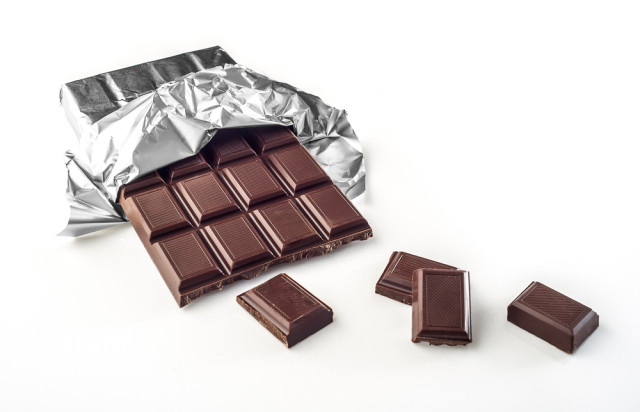
Possible sources of lead and/or cadmium in chocolate…
From our research, we found there are generally three possible source(s) of lead and/or cadmium contamination as follows:
Lead and cadmium is released into the atmosphere through manmade industrial processes such as melting, smelting, fossil fuel burning/coal-fired power plants, waste incineration, leaded gasoline, etc. and this leads to aerial deposition onto soil of lead/cadmium where it remains for decades due to the persistence of these heavy metals.
Direct applications of lead/cadmium contaminated pesticides, phosphate fertilizer (contains cadmium), sewage sludge deposition, and contaminated water supply (irrigation) are all manmade applications that can be easily avoided and remediated through improved management of suppliers by the manufacturers.
Contamination can occur during the manufacturing process. For example, a study by researchers from the University of California, Santa Cruz (Rankin et al 2005, EHP), analyzed cocoa beans, cocoa bean shells, and soils from Nigeria, a key source of cocoa sold in the U.S. The researchers then compared the concentrations in the beans, shells, and soil to manufactured chocolate and cocoa products, including baking chocolate, candy, and pudding, sold in the U.S. Lead levels in the unprocessed beans were very low—less than 0.5 ng/g, while levels in the finished products ranged as high as 230 ng/g for manufactured cocoa.
In the same study, the researchers considered the geographic source of the lead by comparing the isotopic composition of the lead in the raw cocoa, to the lead in the manufactured products, to that in the raw beans, shells and soil. The finished products contained lead with a wide variety of isotopes, whereas the lead in the unprocessed beans had only a narrow range of lead isotopes. And even as to those, their only apparent connection to Nigeria was their consistency with isotopes found in Nigerian leaded gasoline. This finding can lead to only one conclusion—that the lead in the manufactured cocoa products came from human activity before, during, or after the production chain—which under the Proposition 65 regulation would not be “naturally occurring.”
In another study (Yanus et al 2014, Talanta), authors measured metal content in cocoa beans (shell and core), cocoa powder, and cocoa butter using ICP-MS (inductively coupled plasma mass spectrometry). Cocoa powder and butter are produced through the processing of the cocoa bean core after the bean shell has been removed. The study found that the concentrations of lead, as well as other metals including cadmium, were higher in the cocoa powder and butter than the lead concentrations found in the bean core, underscoring that lead contamination is introduced “namely during the manufacturing of cocoa and chocolate products.”
We believe that lead/cadmium contamination can be controlled/remediated through a thorough assessment by the companies of their suppliers, so they can identify the source(s) of heavy metal contamination and clean the supply chain and manufacturing processes.
Only manufactures can identify the source(s) when working together with suppliers; and we want to urge chocolate manufacturers to come together and address this global problem by collaborating with their suppliers to identify the source(s) of these metals so they can effectively remediate to decrease—or ideally remove altogether—the cadmium and lead in chocolate products. And provide consumers with only one choice: a healthy product free of toxic heavy metals.
…we are continuing to test chocolate products. Our California “60-day notice filings” to date can be found at the URL’s below.
7/8/14 – As You Sow “60–day notice” chocolate filings
11/4/14 – As You Sow “60-day notice” chocolate filings
12/22/14 – As You Sow “60-day notice” chocolate filing:
2/11/15 – As You Sow “60-day notice” chocolate filing:
And what about responses from companies like Trader Joes?
Publicly, a few of the articles published about our findings contain responses from manufacturers, including Washington Post (Lenny Bernstein) , Civil Eats (Lizzie Grossman), TakePart, and Confectionery News.
~ Eleanne van Vliet, MPH, Director of Toxic Chemicals Research at As You Sow
Green Diva Lynn chimes in…
I have been enjoying the guilty pleasure of one to two squares of Trader Joe’s Dark Chocolate every single day for the last few years. No, it’s not organic or Fair Trade. Yes, I am an imperfect Green Diva who has been inexcusably lazy about finding a Fair Trade/Organic chocolate bar (in my somewhat lame defense…I mix Fair Trade organic raw chocolate powder into my matcha tea daily).
Trader Joe’s chocolate is on the above list of brands containing unsafe levels of lead and/or cadmium—a cruel form of punishment being inflicted on me from the green gods.
On my last shopping trip to Trader Joe’s I noticed their pound of dark chocolate still on the shelves and asked a staff member about it. He told me that they had talked about this very study in their crew meeting and that the tests were not valid. Hmmm. What’s a Green Diva to do? Sadly, even with this knowledge, I continued to eat my Trader Joe’s chocolate to the bitter end and have been going without chocolate for days now.
Help. Me. Need. Chocolate.
I’m going to search for Endangered Species Chocolate, which is on the “no warning required” list, and hope that it’s delicious and not expensive. I may have to reduce my dark chocolate intake, which will be sad but possibly a sacrifice I need to make.
Bonus:
Enjoy the latest full episode of The Green Divas Radio Show!
Listen daily to the latest Green Divas Radio Show—and other green and healthy living podcasts—on GDGDRadio.com (or get the GDGD Radio app)!
 As You Sow is a nonprofit organization that promotes environmental and social corporate responsibility through shareholder advocacy, coalition building, and innovative legal strategies. You can connect with them on Twitter and Facebook.
As You Sow is a nonprofit organization that promotes environmental and social corporate responsibility through shareholder advocacy, coalition building, and innovative legal strategies. You can connect with them on Twitter and Facebook.
[dynamic-sidebar id=’Custom Widget 2′]
~Asst. Ed. Green Diva Christine
Pingback: Eat Drink Better | Healthy recipes, good food: sustainable eats for a healthy lifestyle!
piterson
March 18, 2015 at 4:22 am
Lead could be a serious metal that’s toxic at terribly low exposure levels and has acute and chronic effects on human health and causes neurological, cardiovascular, renal, gastrointestinal, haematological and reproductive effects. So, be aware of lead in a chocolate product.